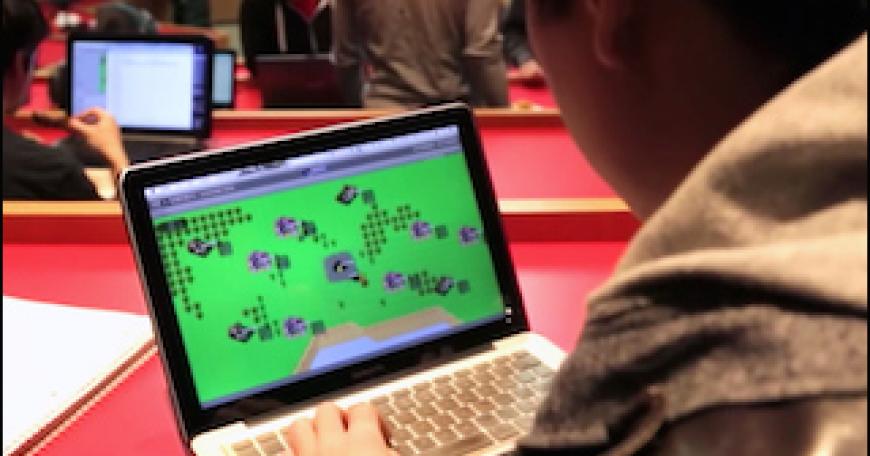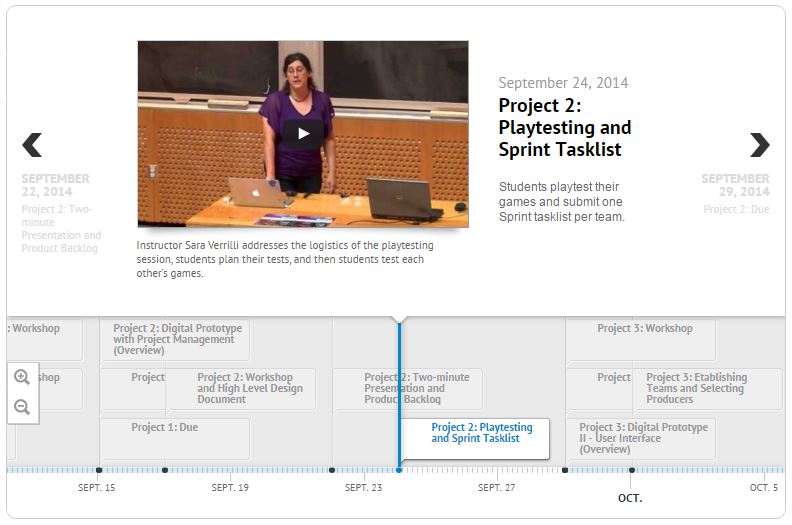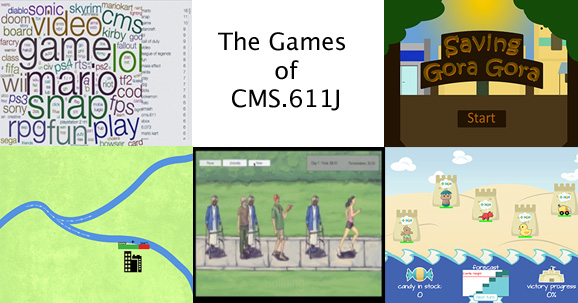
Getting Serious About Video Games
You’ve been playing video games your whole life, all kinds of video games, and you’ve developed a pretty keen sense of what makes one game really fun and another not so much. There’s this game you’ve had in mind of creating for quite some time, and now you’ve finally got the chance to make it a reality because you’re an MIT student who’s enrolled in CMS.611J Creating Video Games.
There’s just one catch, well, more than one. You can’t possibly make the game just by yourself, so you have to work on a team with other people who have also played lots of video games, and they all have their own ideas for cool new video games. One student has impressive programming skills. One has none. One has lots of design experience. You only have a little . . . You have eight weeks to make the game, and oh, by the way, the instructors insist that the game not only has to function properly and be fun to play, but must meet the needs of a client. And that client wants the game for a very specific purpose: to help save the world! Good luck!
A Project-based Course . . .
This robust course, just published on OCW, is designed to help students meet this challenge. Over a series of four projects, students build their teamwork and project management skills, starting with a paper prototype and moving on to increasingly more complex projects that culminate in the course finale, the humanitarian game that students create themselves from scratch.
With an Interactive Timeline . . .
The instructors, Philip Tan, Rik Eberhardt, Sara Verrilli, and Andrew Grant, have thought long and hard about how to get students to work together on a creative project. They share their reflections about the challenges of the course and how they teach the design process in video interviews in the Instructor Insights section of the course site’s This Course at MIT page.

- The interactive timeline shows the amount of time instructors allocated for each project and how the projects progressively increased in complexity.
An interactive timeline also on this page captures this iterative process across the semester, featuring video clips from class lectures and student presentations.
And Complete Video Lectures . . .
The lecture videos on the course site cover the entire gamut of topics, from prototyping and aesthetics to narrative and working with artists and sound designers. There are guest lectures by people from Riot Games, Access Games, Fire Hose Games, and other game-making groups. The course’s client, Pablo Suarez of Red Cross / Red Crescent Climate Centre, discusses in a video interview the importance of creating games that are fun and engaging while at the same time addressing real-world problems.
And Student Games . . .

- Games created by the CMS.611J students (clockwise from top left): Snap!, Saving Gora Gora, Hello Waves, Heat Wave, and Cholera Control.
Responding to his humanitarian challenge, students taking the course created a variety of games. In one, players brainstorm new ideas and foster social understanding by sharing word associations. In others, players must identify the cause of an epidemic, prevent the spread of cholera, mitigate the effects of a heat wave, and protect against rising ocean waves. Students who worked on the games reflect on their experiences in video interviews.
So Check It Out!
CMS.611J is one of the most innovative course sites on OCW. It contains a full cache of information and presents many different points of view. So if you want to power up and see how video games get created, or if you are interested in teaching how to make video games, this course can take you to the next level.

